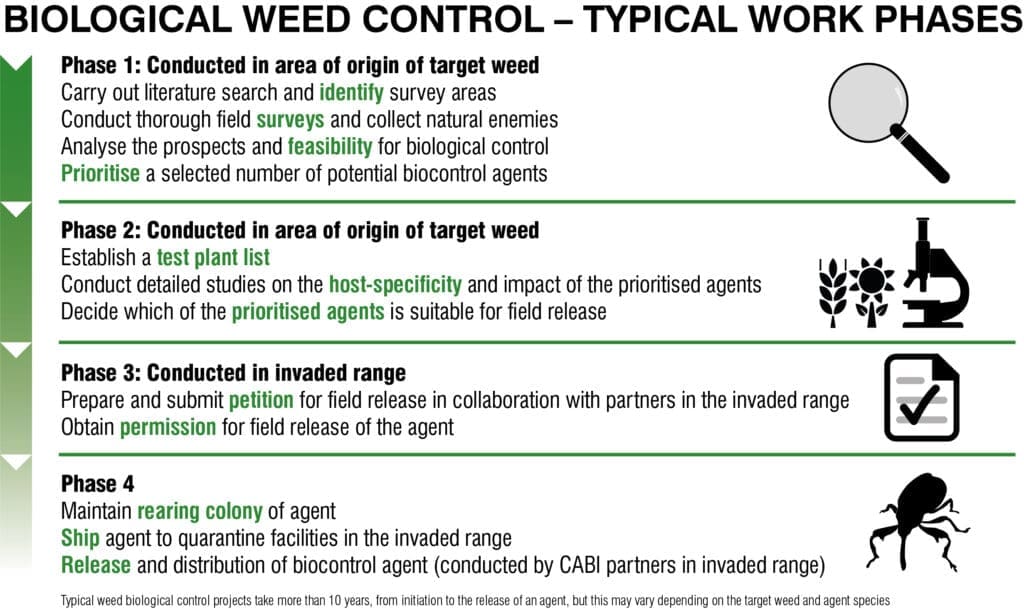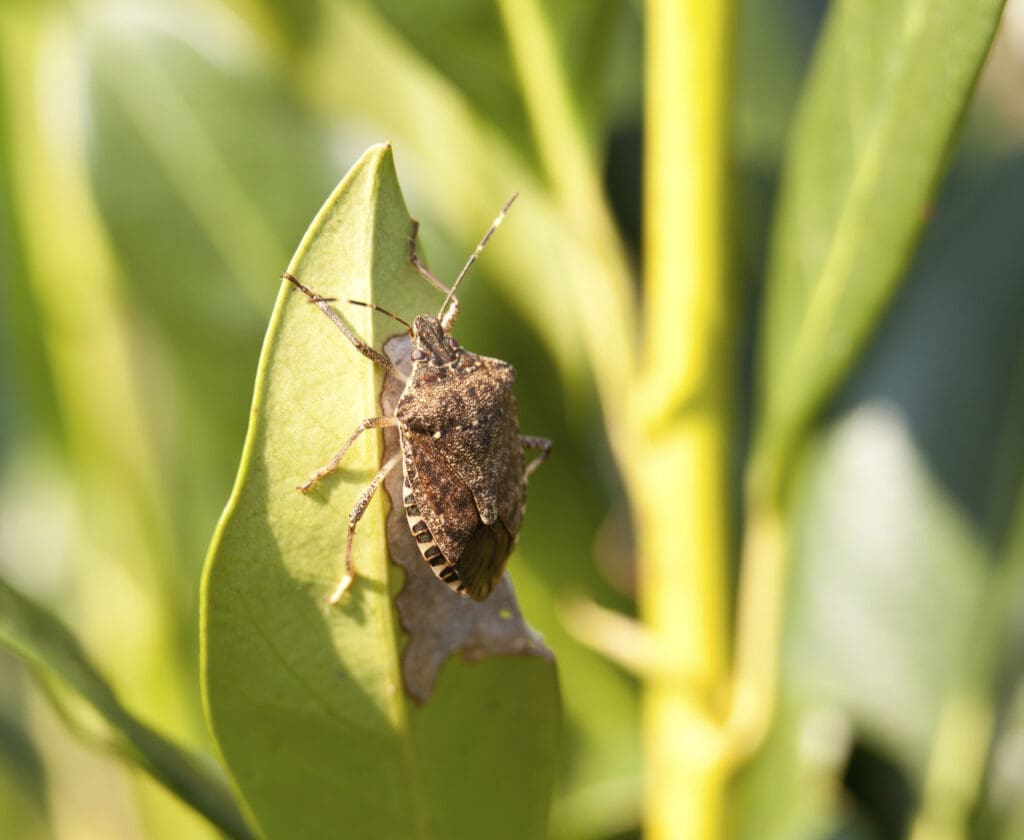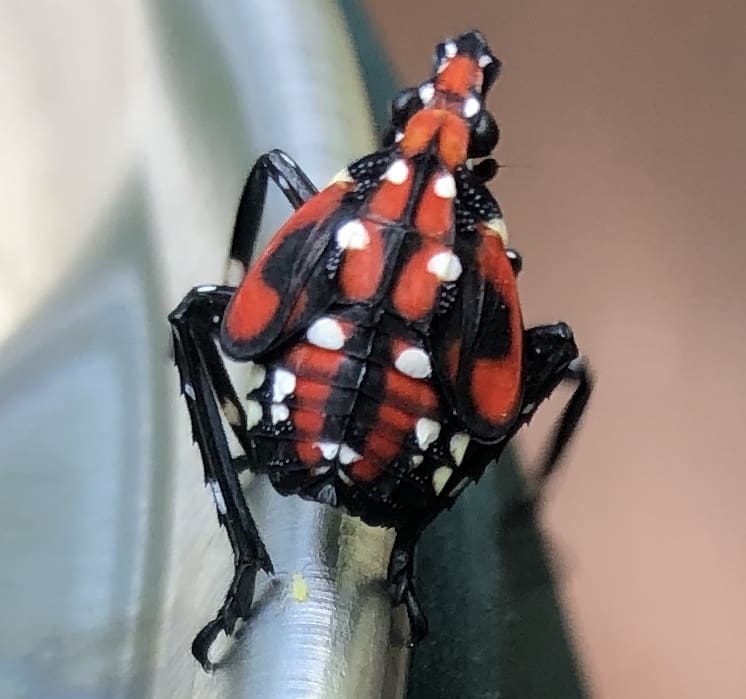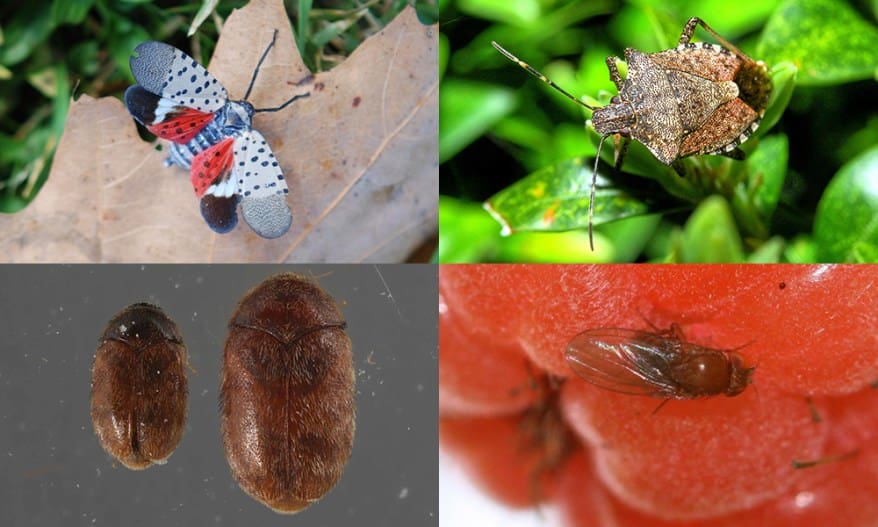Invasive pests can wreak havoc on our homes and gardens, causing damage and frustration. But fear not! This article will guide you through the process of identifying and controlling these pesky invaders. With helpful tips and techniques, you’ll become an expert in recognizing the signs of invasive pests and taking effective measures to eradicate them. Whether it’s termites, rodents, or ants, we’ve got you covered. Say goodbye to unwanted visitors and regain control of your space with the knowledge provided in this comprehensive guide.

Types of Invasive Pests
Termites
Termites are small insects that feed on wood and are considered one of the most destructive pests. They live in colonies and can cause significant damage to your property if left untreated. It’s important to identify termite infestations early on to prevent further destruction.
Cockroaches
Cockroaches are nocturnal insects that can quickly multiply and infest your home. They are known to carry diseases and can contaminate food and surfaces. Identifying Cockroach infestations is crucial for maintaining a clean and healthy living environment.
Bed bugs
Bed bugs are parasitic insects that feed on human blood. They are commonly found in mattresses, furniture, and clothing. Bed bug infestations can cause uncomfortable bites and sleepless nights. Early detection is vital to prevent these pests from spreading throughout your home.
Ants
Ants are social insects that can invade your home in search of food and shelter. They leave a trail of pheromones to communicate with their colony members and can quickly establish large colonies. Identifying ant infestations can help you prevent further invasions and minimize the risk of structural damage.
Mosquitoes
Mosquitoes are flying insects that are known for their itchy bites. They are carriers of various diseases, including malaria, dengue fever, and West Nile virus. Identifying areas where mosquitoes breed and their presence can help you take preventive measures to protect yourself and your family.
Identifying Invasive Pests
Physical characteristics
Understanding the physical characteristics of invasive pests is crucial for identification. Termites have straight antennae, while cockroaches have long antennae and a flat, oval-shaped body. Bed bugs are reddish-brown and small in size, while ants vary in size and color depending on the species. Mosquitoes have long, thin bodies with wings.
Behavioral patterns
Invasive pests exhibit specific behavioral patterns that can help you identify their presence. Termites create mud tubes and hollow out wood, leaving behind a maze-like pattern on damaged surfaces. Cockroaches are mostly active at night and can be found in dark, damp areas. Bed bugs feed on blood and leave behind small reddish-brown stains on mattresses and furniture. Ants form visible trails as they forage for food. Mosquitoes are most active during dawn and dusk and are commonly found near standing water sources.
Signs of infestation
Look out for signs of infestation to identify invasive pests in your home. Termites leave behind discarded wings, piles of wood dust, and sagging floors or walls. Cockroach infestations can be identified by their droppings, which resemble small black pellets. Bed bugs leave behind dark spots or smears on sheets and mattresses, and you may find their shed skins. Ant infestations can be detected by visible trails and small piles of dirt near entry points. Mosquitoes leave behind itchy bites and you may find them in areas with stagnant water.

Understanding the Risks
Damage to property
Invasive pests can cause various types of damage to your property. Termites can weaken the structure of your home by eating away at wooden beams and foundations. Cockroaches can contaminate food and surfaces with their droppings, leading to health risks. Bed bugs can cause sleepless nights and leave behind itchy bite marks. Ants can create nests in walls and cause structural damage over time. Mosquitoes transmit diseases and are a nuisance during outdoor activities.
Health risks
Invasive pests pose health risks to you and your family. Cockroaches and their droppings can trigger allergies and asthma symptoms, especially in children and individuals with respiratory conditions. Bed bug bites can cause skin rashes and allergic reactions. Ants can bite and inject formic acid, which can cause pain, swelling, and allergic reactions. Mosquitoes are carriers of diseases such as Zika virus, dengue fever, and West Nile virus.
Ecological impact
Invasive pests can have a detrimental impact on the environment. Termites play a crucial role in the decomposition of dead wood in forests but can cause ecological imbalance when they infest structures. Cockroaches and bed bugs can hitchhike on luggage, furniture, and clothing, spreading to new locations. Ants can displace native species and affect the natural ecosystem. Mosquitoes can disrupt the balance of certain ecosystems and serve as disease vectors.
Preventing Invasive Pest Infestations
Maintaining cleanliness
Keeping your environment clean is essential in preventing invasive pest infestations. Regularly clean and vacuum your home to remove food crumbs and potential hiding places for pests. Clean up spills promptly and store food in sealed containers. Ensure garbage is properly sealed and disposed of regularly.
Sealing entry points
Sealing entry points is crucial in preventing invasive pests from entering your home. Inspect your property for cracks, gaps, and openings in the foundation, walls, and windows. Seal these entry points using caulk or other suitable materials. Repair damaged screens on windows and doors to keep pests out.
Proper storage of food and waste
Properly storing food and waste can deter pests from infesting your home. Store food in airtight containers to prevent access to pests. Dispose of garbage regularly in sealed bins, and keep compost bins away from the main structure of your home. Clean pet food bowls regularly and store pet food in sealed containers.
Regular inspections
Regular inspections are essential in identifying invasive pest infestations early on. Inspect your property for signs of damage, such as wood decay or droppings. Monitor for pest activity, such as cockroach sightings or ant trails. Conduct routine inspections in areas prone to infestations, such as basements, attics, and crawl spaces.

Natural Control Methods
Introduction to biological control
Biological control involves using natural organisms to control invasive pests. This method aims to reduce pest populations by introducing natural predators, parasites, or pathogens.
Predatory insects
Predatory insects, such as ladybugs and lacewings, can help control populations of invasive pests. These insects feed on pests like aphids and mites and can be released in infested areas to limit their population growth.
Beneficial nematodes
Beneficial nematodes are microscopic worms that can be used to control pests like ants, grubs, and termites. These nematodes seek out and infect pests, ultimately leading to their demise.
Microbial controls
Microbial controls involve using bacteria, fungi, or viruses to target specific pests. These microorganisms can infect and kill pests while leaving beneficial organisms unharmed. Examples include the use of Bacillus thuringiensis (Bt) to control mosquitoes and caterpillars.
Chemical Control Methods
Insecticides
Insecticides are chemical compounds designed to kill or repel insects. They can be used to control invasive pests when other methods are ineffective. It’s important to follow the instructions and safety guidelines provided by the manufacturer when using insecticides.
Rodenticides
Rodenticides are chemical substances used to control rodent populations. They are typically used to target rats and mice that can cause damage and spread diseases. Care must be taken when using rodenticides to prevent harm to non-target animals.
Choosing the right product
Choosing the right product is essential when using chemical control methods. Consider factors such as the type of pest, the severity of the infestation, and the potential risks to humans and pets. Read product labels carefully and select registered pesticides approved for use in your area.
Safety precautions
When using chemical control methods, take necessary safety precautions to protect yourself, others, and the environment. Wear protective clothing, gloves, and masks when handling chemicals. Keep children and pets away from treated areas. Follow proper storage and disposal procedures.

Integrated Pest Management
Principles of IPM
Integrated Pest Management (IPM) is a comprehensive approach to pest control that combines various strategies to reduce pests and minimize risks. IPM focuses on prevention, monitoring, and using multiple control methods to manage pests effectively.
Monitoring and early detection
Monitoring and early detection are critical components of IPM. Regularly inspect your property for signs of pest activity and implement preventive measures before infestations become severe. Proper monitoring helps detect pest populations early on, allowing for more targeted and effective control measures.
Using multiple control methods
IPM emphasizes the use of multiple control methods to manage pests. This approach combines biological, mechanical, cultural, and chemical control methods, tailored to the specific pest and situation. By using a combination of strategies, pests can be managed more effectively, reducing the need for reliance on chemical pesticides.
Reducing chemical pesticide use
One of the key principles of IPM is to reduce the use of chemical pesticides whenever possible. By implementing preventive measures, such as maintaining cleanliness and sealing entry points, and using natural control methods, the reliance on chemical pesticides can be minimized. This approach promotes environmental sustainability and reduces potential health risks.
Seeking Professional Assistance
When to call a professional
Sometimes, invasive pest infestations may require professional assistance. If attempts to control pests on your own have been unsuccessful, or if the infestation is severe, it’s advisable to seek help from a pest control professional. They have the knowledge, experience, and equipment to effectively manage and eliminate pest problems.
Choosing a reputable pest control company
When choosing a pest control company, it’s important to select a reputable and reliable provider. Do your research, read customer reviews, and ask for recommendations from friends or family. Look for companies that are licensed, insured, and experienced in dealing with the specific pest issues you are facing.

Preventing Reinfestation
Ongoing maintenance
Preventing reinfestation requires ongoing maintenance of your property. Continue practicing good hygiene and cleanliness habits to deter pests from returning. Regularly inspect for signs of pest activity and address any issues promptly. Keep your home well-maintained to minimize potential entry points for pests.
Monitoring and follow-up inspections
After implementing pest control measures, regular monitoring and follow-up inspections are essential. This will help ensure the effectiveness of the control methods and allow for early detection of any recurring or new pest problems. Address any issues promptly to prevent reinfestation.
Conclusion
Invasive pests can pose significant threats to both your property and your health. Identifying these pests and understanding their risks is essential in preventing infestations. By maintaining cleanliness, sealing entry points, and implementing proper storage and waste management practices, you can mitigate the risk of invasive pests entering your home. Natural control methods can be effective in managing pests, while chemical control methods should be used judiciously and with caution. Integrated Pest Management provides a holistic approach to pest control, emphasizing prevention, monitoring, and the use of multiple control methods. When facing severe infestations or unsuccessful control attempts, seek professional assistance from reputable pest control companies. Continued maintenance and regular inspections will help prevent reinfestation and ensure a pest-free environment for you and your family.

I am Randy, the author behind PestControld.com. Drawing from decades of experience, I aim to provide valuable insights, expert advice, and practical recommendations to help you make informed decisions when assessing viable pest control solutions.